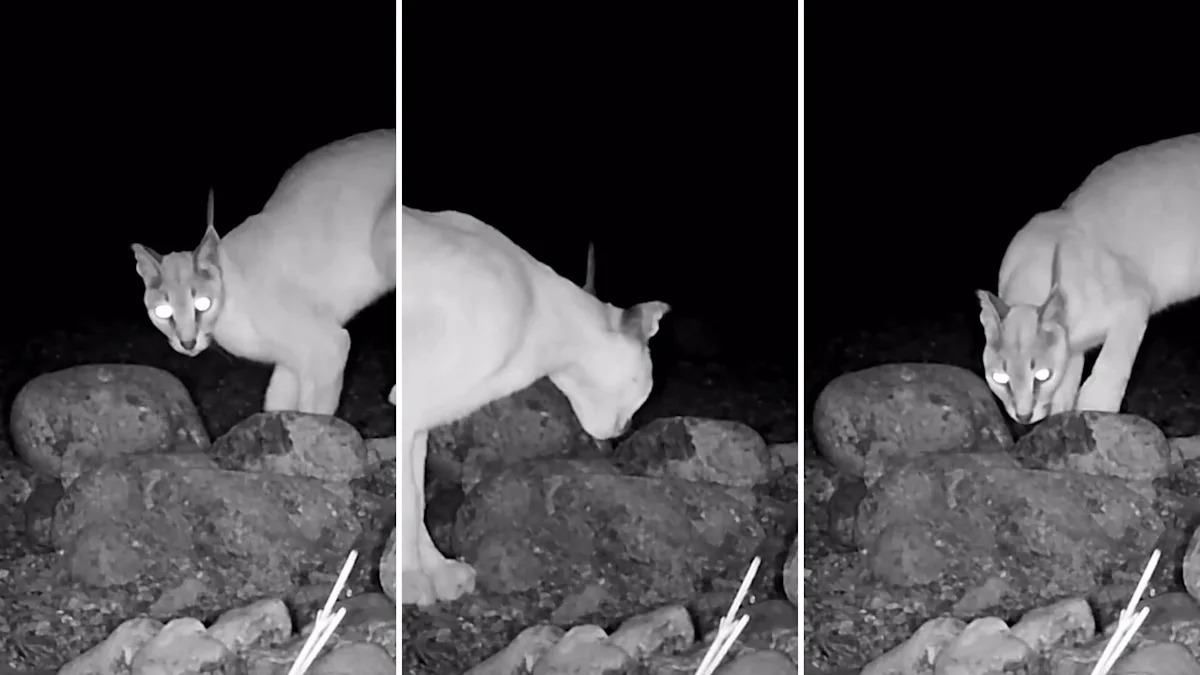Cat videos have long been a massive part of internet culture, but as the Miami Herald reported, conservationists in the United Arab Emirates captured some truly extraordinary feline footage.
The video in question was shared to Instagram by EmiratesNature-WWF (@ews_wwf), a collaboration between Emirates Nature and the World Wildlife Foundation, or WWF.
EmiratesNature-WWF focuses heavily on conservation in the UAE, and the organization’s excitement was palpable in an Oct. 7 press release about an astonishing trail camera sighting.
“In a milestone for conservation, the Arabian caracal (Caracal caracal schmitzi) has been rediscovered in Wadi Wurayah National Park,” Emirates-Nature-WWF announced.
According to the group, volunteers participating in a specific monitoring project, the Notice Nature mapping initiative, help scan motion-activated trail camera footage as citizen scientists.
The organization noted that credible, documented sightings of the Arabian caracal had waned, but added that sightings occurred in 2019 and 2023. The efforts of citizen scientists sifting through trail camera footage provided “fresh hope for its survival” in wild areas.
Trail cameras have been a game-changer for scientists, conservationists, and others working to monitor and protect endangered populations, such as the Arabian caracal.
Although trail cameras are not strictly new, as with many technologies, recent advancements have vastly expanded what can be done with them. Solar-powered batteries enable continuous monitoring, which is how the caracal was sighted.
Self-recharging batteries also facilitate the placement of trail cams in remote or hard-to-access areas, as they require far less in-person maintenance. The same is true for advancements in data storage, with higher local capacity and the ability to transmit real-time data to the cloud.
Consequently, everyone from conservationists and scientists to wildlife enthusiasts can tune in in the hopes of seeing a variety of rare creatures on land or at sea across a range of habitats.
In EmiratesNature-WWF’s post, the organization noted that caracals are “so elusive and mostly nocturnal, they’ve only been recorded a handful of times in recent decades.” Thanks to volunteer trail cam monitors, this ultra-rare sighting was documented.
The group said such sightings demonstrated the importance of conservation measures for documenting and monitoring populations, which also ultimately impacts the food chain.
“Today, the Arabian caracal is classified as Critically Endangered on the UAE National Red List, with likely fewer than 250 mature individuals surviving in the wild. This underlines the importance of protected areas like Wadi Wurayah in sustaining populations of rare species,” their press release explained.
Join our free newsletter for good news and useful tips, and don’t miss this cool list of easy ways to help yourself while helping the planet.
